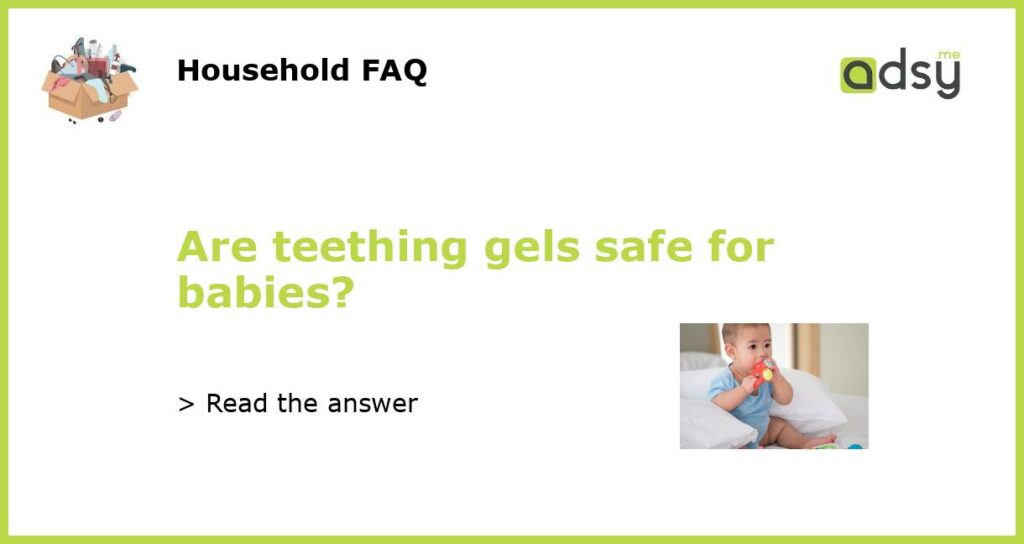Teething Gels for Babies: Examining their Safety and Effectiveness
Teething is a common and sometimes painful experience that babies go through as their first set of teeth emerge. To alleviate their discomfort, many parents turn to teething gels. These gels are marketed as numbing agents that provide relief to babies during this challenging phase. However, there has been some debate on the safety and effectiveness of these gels. This article aims to investigate the potential risks and benefits associated with the use of teething gels for babies.
The Safety Concerns Surrounding Teething Gels
One of the primary concerns regarding teething gels is the presence of benzocaine, a common ingredient found in many over-the-counter teething gels. Benzocaine is a local anesthetic that temporarily numbs the gums to provide relief. However, the U.S. Food and Drug Administration (FDA) has issued multiple warnings about the use of teething gels containing benzocaine due to the risk of a rare but serious condition called methemoglobinemia.
Methemoglobinemia is a condition in which the amount of oxygen carried through the bloodstream is reduced. It can be life-threatening, especially for infants who are more susceptible to the harmful effects of benzocaine. Some symptoms of methemoglobinemia include pale or bluish skin, rapid heart rate, shortness of breath, and fatigue.
Another safety concern is the potential misuse or overuse of teething gels. Some parents may mistakenly apply excessive amounts of gel, leading to an overdose of benzocaine. Additionally, sharing teething gels with other children or using expired products can also pose health risks.
Effectiveness of Teething Gels
While teething gels may provide temporary relief for babies, their overall effectiveness is debated within the medical community. Some pediatricians argue that the numbing sensation provided by the gels creates a false sense of comfort and may discourage babies from seeking other soothing methods such as chewing on teething toys or cold objects.
A study published in the journal “Pediatrics” showed that teething gels containing benzocaine were not significantly more effective in reducing teething pain compared to placebo gels. The study emphasized the importance of using alternative, non-medicated teething remedies such as chilled teething rings or applying gentle pressure on the gums with a clean finger.
Safe Alternatives for Teething Relief
While teething gels have their potential risks, there are safer alternatives that parents can explore to provide relief to their teething babies:
- Cold Compresses: Applying a clean, cold washcloth or teething ring to the baby’s gums can help reduce inflammation and numb the area.
- Teething Toys: Chewing on silicone or rubber teething toys can offer babies a safe and soothing experience. It is essential to choose toys specifically designed for teething and ensure they are clean and free from any small parts that could pose a choking hazard.
- Gum Massage: Gently massaging the baby’s gums with a clean finger can provide relief by applying gentle pressure to the teething area.
- Acetaminophen: If the pain is severe and other methods are not providing sufficient relief, consulting with a pediatrician about the use of infant acetaminophen may be an option. It is crucial to follow the recommended dosage and guidance from a medical professional.
When it comes to teething gels for babies, it is essential to balance the potential risks with the limited effectiveness they offer. Parents should carefully consider the safety concerns associated with benzocaine and consult with a pediatrician before using any teething gels containing this ingredient. Exploring alternative, non-medicated methods for teething relief may be a wiser choice to ensure the well-being of the baby.






